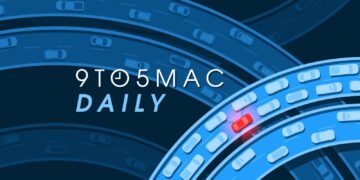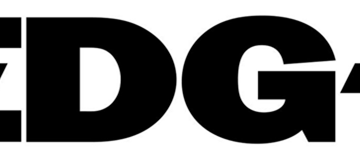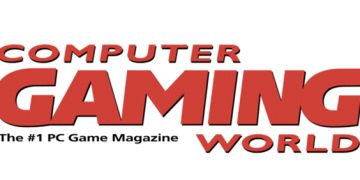Patrick Moorhead, Senior Contributor
2025-07-11 16:33:00
www.forbes.com
At HPE Discover 2025, CEO Antonio Neri made the company’s case for helping enterprises embrace AI … More
It turned out that the HPE Discover 2025 keynote — held for the second year running at The Sphere in Las Vegas — took place only a couple of days before the news broke that the U.S. government would allow HPE’s acquisition of Juniper Networks to go ahead. I attended the conference in person, plus had the chance to visit CEO Antonio Neri at an HPE headquarters outside of Houston. I talked with him in depth about the conclusion of the Juniper deal and how he sees HPE helping enterprises embrace AI, bringing networking as well as compute to data-intensive hybrid settings — where HPE was early to market.
HPE faces stiff competition from Dell, Lenovo, Cisco and others as all of these vendors race to build out AI capacity for their customers. Each of these companies has its own areas of emphasis; I believe that HPE has positioned itself strongly to compete, not only with its $14 billion purchase of Juniper, but in particular with its acquisition of Morpheus Data nearly a year ago and its launch just now of GreenLake Intelligence, backed up by its new ProLiant 12 servers, HPE OpsRamp and AI-specific offerings from HPE Aruba Networking. Neri and the rest of HPE’s leadership have put a lot of thought into a full-stack offering to enable AI, and I expect it to make a mark in the industry.
(Note: HPE is an advisory client of my firm, Moor Insights & Strategy.)
Why Enterprise AI Needs So Much Networking
I was a little surprised when Neri opened his Discover keynote by talking about networking. I would have put that topic a little lower in the batting order, but maybe he knew something the audience didn’t about the imminent Juniper news. I also recognize that Aruba is a juggernaut in edge networking, but was still surprised. Networking is so important today in enterprise technology because bigger and more complex AI models require more expansive network capabilities to run — and to be fully exploited by the companies that use them. That applies to everyone, but in HPE’s case there’s the important added dimension that the company wants to excel in both AI-for-networking, where it is already very active, and in networking-for-AI, through which it wants to boost customers’ ability to use AI on their data.
It’s no accident that Neri talked early in his keynote about the common problem faced by businesses of all sizes making the shift to AI: legacy IT architecture is hard to modernize. And of course it’s no accident that HPE wants to layer its (now significantly expanded) networking capabilities on top of its expertise in hybrid cloud to capitalize on the AI boom, for its customers and for itself.
My colleague Will Townsend, who’s an expert on networking and security, also attended Discover and joined me for the interview with Neri at the HPE headquarters in Texas. You can watch an edited version of that interview here. For more on the nuts and bolts of HPE’s announcements at Discover in Will’s specialty areas, I encourage you to read his analysis published last week on Forbes.
What The Juniper Deal Does For HPE
Juniper brings 10,000-plus new employees into HPE, and during our interview, Neri told us that in the wake of the acquisition the combined company now has nearly 7,000 engineers just for networking. I like to think that Bill Hewlett and David Packard, both of them engineers down to their bones, would smile at incorporating an engineering-heavy culture like Juniper’s into HPE.
Aside from the strong cultural fit, Juniper rounds out the connectivity functions HPE needs for a complete enterprise offering. In the AI world, networking is required for both scale-up and scale-out applications in the datacenter, plus connecting the datacenter to the outside world, including the AI-infused edge. As Neri put it, when you stand up a new datacenter, one of the first things you have to do is bring in the pipe that connects it to the outside world. Juniper has a great routing business to address exactly that, not to mention its Mist networking platform. The Juniper portfolio — and client base — complements what HPE was already doing, for instance with Aruba’s edge networking capabilities (and related security functions). So now HPE has an even broader range of cloud-native, AI-driven connectivity solutions to address campus, branch and datacenter functions.
It’s clear that Neri regards the Juniper acquisition as a strategic way to add value to HPE’s offerings, not some consolidation play. Juniper’s engineering chops extend to custom silicon and really smart software, and I feel sure there will be chances to fold that expertise into HPE’s product lines over time. In short, I believe this acquisition is going to improve HPE’s ability to deliver efficient, cost-effective, scalable connectivity both into the datacenter and within the datacenter, which will only get more important as AI (especially agentic) continues to grow. Time will tell what this means in the context of Cisco, particularly for core switches.
Enabling Enterprise AI With Everything As-A-Service
Neri sees the network as the first step for enterprise AI — “how you connect this vast pool of data that lives everywhere.” And he emphasizes that AI workloads are hybrid and data-intensive in their essence, which further plays to HPE’s strengths. The company also has an existing delivery mechanism to make it easy for customers to capture these strengths; for years now, the GreenLake platform has given HPE the ability to offer everything as-a-service, including private or hybrid cloud infrastructure.
At Discover, Neri announced the next iteration on this — GreenLake Intelligence. This is essentially an integrated way to deliver “autonomous IT” that spans observability, GreenOps (eco-friendly operations), provisioning, resiliency, FinOps, storage, support, security, networking and orchestration. AI agents within GreenLake Intelligence act across the entire hybrid cloud estate to help with optimization, management and so on — which addresses the emerging need for IT organizations to reevaluate how they deploy workloads in this era of AI. For me, GreenLake Intelligence was the biggest announcement of the show, because it puts every element of hybrid cloud operations into one stack.
GreenLake Intelligence is just one of the offerings that show how HPE has been building toward truly integrated, full-stack hybrid operations for years. The HPE CloudOps software suite, for example, allows your IT team to observe, provision and manage everything from one place — which, among other benefits, should lower your operating costs. CloudOps builds in part on the very clever purchase of Morpheus with its hybrid-cloud management capabilities, which I think is the best acquisition HPE has ever made. (That’s really saying something, considering the past decade of contributions from Aruba and the promise embodied in the Juniper deal.) All of this is about enabling the hybrid application stack and helping it connect to whatever else is in an enterprise’s unique IT architecture — now including connectors to the public cloud, which is something I criticized HPE for lacking in the past.
When we interviewed him, Neri told us that HPE aims to enable tailoring the hybrid environment for each customer — in terms of both experience and cost — then help them scale the whole thing, including silicon IP, compute, storage, software, security and services. I have to give him and his team credit for taking the steps to make that vision a reality.
Implementing A Vision For Hybrid Cloud
Kudos to HPE for being the first big vendor — years ago — to buy in so strongly on hybrid cloud. These days, hybrid cloud is the company’s bigger differentiator, and it’s clear that HPE continues to build in that direction. From my perspective, it has made one smart move after another to enable enterprise AI, for example with the networking both in the datacenter and at the edge that allows customers to put the compute near the data where it belongs. Another example that I didn’t have room for here — but which my colleague Matt Kimball has analyzed in depth — is the new line of ProLiant 12 servers, full of innovations to make datacenter computing more secure and performant for AI workloads. HPE is so dedicated to engineering that the often-overused term “innovation” really does apply.
That said, of course I also have some questions. HPE Discover 2025 was full of discussion about implementing AI, but last year’s version of the event made a very big splash about the company’s AI partnership with Nvidia. Yet I’m still uncertain whether HPE has signed up many customers for that private AI platform. The company says it has more than 250 AI use cases in the works, with more than 50 already in production. Could we have some examples with real live companies?
I would also love to see HPE make the value proposition for GreenLake Intelligence more tangible. Please don’t get me wrong: I think the value prop is strong. But what I said last year about HPE’s homegrown software applies to GreenLake Intelligence, too: trot out customers that are using it, delighted with it and optimizing TCO because of it. We don’t need all the details, just a few metrics that show progress in pipeline, sales, usage. So that’s another thing I’m super interested in learning more about in the future.
This year marks the 10th anniversary since HPE became an independent company. It has established itself as a powerhouse in hybrid cloud and networking — one that should only get stronger with the Juniper acquisition. As I look ahead to the company’s next 10 years, I love the aggressive approach to the market and the focus on customers. I’m looking forward to seeing how those customers ultimately integrate HPE capabilities across compute, storage, networking and infrastructure software. The market positioning and the technology are compelling. At this point, execution is everything.
Moor Insights & Strategy provides or has provided paid services to technology companies, like all tech industry research and analyst firms. These services include research, analysis, advising, consulting, benchmarking, acquisition matchmaking and video and speaking sponsorships. Of the companies mentioned in this article, Moor Insights & Strategy currently has (or has had) a paid business relationship with Cisco, Dell, HPE, Lenovo and Nvidia.
Enhance your driving experience with the P12 Pro 4K Mirror Dash Cam Smart Driving Assistant, featuring Front and Rear Cameras, Voice Control, Night Vision, and Parking Monitoring. With a 4.3/5-star rating from 2,070 reviews and over 1,000 units sold in the past month, it’s a top-rated choice for drivers. The dash cam comes with a 32GB Memory Card included, making it ready to use out of the box. Available now for just $119.99, plus a $20 coupon at checkout. Don’t miss out on this smart driving essential from Amazon!
Help Power Techcratic’s Future – Scan To Support
If Techcratic’s content and insights have helped you, consider giving back by supporting the platform with crypto. Every contribution makes a difference, whether it’s for high-quality content, server maintenance, or future updates. Techcratic is constantly evolving, and your support helps drive that progress.
As a solo operator who wears all the hats, creating content, managing the tech, and running the site, your support allows me to stay focused on delivering valuable resources. Your support keeps everything running smoothly and enables me to continue creating the content you love. I’m deeply grateful for your support, it truly means the world to me! Thank you!
|
BITCOIN
bc1qlszw7elx2qahjwvaryh0tkgg8y68enw30gpvge Scan the QR code with your crypto wallet app |
|
DOGECOIN
D64GwvvYQxFXYyan3oQCrmWfidf6T3JpBA Scan the QR code with your crypto wallet app |
|
ETHEREUM
0xe9BC980DF3d985730dA827996B43E4A62CCBAA7a Scan the QR code with your crypto wallet app |
Please read the Privacy and Security Disclaimer on how Techcratic handles your support.
Disclaimer: As an Amazon Associate, Techcratic may earn from qualifying purchases.








































































































